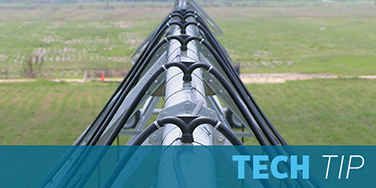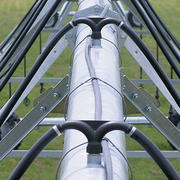
Thermoplastic goosenecks come with their own set of benefits versus steel models. They do not rust or flake like steel –which helps eliminate pressure regulator or nozzle plugging issues– and their non-corrosive UV-resistant construction ensures they last for years.
However, we recognize that their thermoplastic construction means a little extra care needs to go into installation.
We’ve compiled a couple of do's and don’ts that will hopefully make installation a little easier and ensure your thermoplastic goosenecks are still working for years to come.
Do
- Use a ¾” NPT thread tap to clean the threads of any jagged or rough finishes on an outlet in the pipe before installing a gooseneck. Older pipes may be rusty or an outlet may have been plugged for a period of time before use.
- Use a truss rod hose sling with all 125° gooseneck installations. These provide some strain relief to the hose assembly and prevent the hose from rubbing on the truss rod and wearing prematurely. Truss rod hose slings also hold the drop hose in a fixed location to help assure proper applicator spacing and prevent the hose from blowing over the truss rod.
- Use a hose clamp to secure the hose to the barb outlet model gooseneck. This prevents the hose from being pulled off the assembly if traveling through high profile crops or in high wind conditions.
Don't
- Use PVC fittings. PVC material is not UV stable and will crack and fail over time. Always use galvanized fitting or a UV-stable thermoplastic like the Senninger fittings.
- Use any petroleum-based pipe thread sealants. These will cause accelerated failure of the gooseneck threads. If using a sealant on the threads going into the supply line or on the NPT outlet model, use Teflon tape instead.
- Thread the gooseneck too tightly. This will cause excessive stress on the threads and premature failure of the fitting.


